PAS 55: The original modern standard
In earlier decades, the word asset more often referred to financial assets. The term "asset management" was first used in reference to the oversight of physical business assets in 1984. It was also usually qualified as infrastructure asset management, meaning the oversight of major pieces of infrastructure.
That initial focus on large capital assets shaped many early industrial standards. The first was Publicly Available Specification 55 (PAS 55), introduced in 2004. Many industry professional groups collaborated to produce it under the leadership of the Institute for Asset Management (IAM).
Business experts recognized that companies were wasting too much time and resources by not investing in proper asset tracking and management. The original 2004 PAS 55 standard presented a 28-point checklist of physical asset tracking best practices. It defined an asset broadly as anything that had value to the organization. However, these best practices mainly applied to the industries of the IAM member organizations, which predominantly came from the transit, public works, and heavy industry sectors. As such, the original standard placed a heavy emphasis on capital assets, the larger scale 'macro-level' assets of this section's title. Nevertheless, PAS 55 was popular enough to receive a major update in 2008.
Replaced by ISO 55000
The IAM recognized the need for updating its standard as then tools, technology, business practices, stakeholder expectations, and the nature of an "asset" itself changed rapidly in the early years of the twenty-first century. So in 2014, it released a new asset tracking and management standard, ISO 55000, replacing PAS 55.
The IAM and its member organizations revised ISO 55000 again in 2018 to keep pace with the rapidly changing nature of business. Further updates in 2019 and 2021 refined the standard's best practices for aligning asset tracking with modern accounting practices and governmental policies.
Businesses today recognize value can come in much smaller packages
In just a few short decades, the convergence of digital and physical technologies has radically changed what types of assets generate value for an organization. Cloud-based internet services make handheld electronic devices as powerful, if not more powerful, than data centers at the turn of the century.
Much smaller and more mobile equipment is now needed to maintain operations at many businesses. Asset tracking has always been important, but in modern networked workplaces, it is essential. Organizations today recognize that the principles of cost-effective asset tracking and optimizing day-to-day usage are just as important for smaller assets as they are for capital assets.

